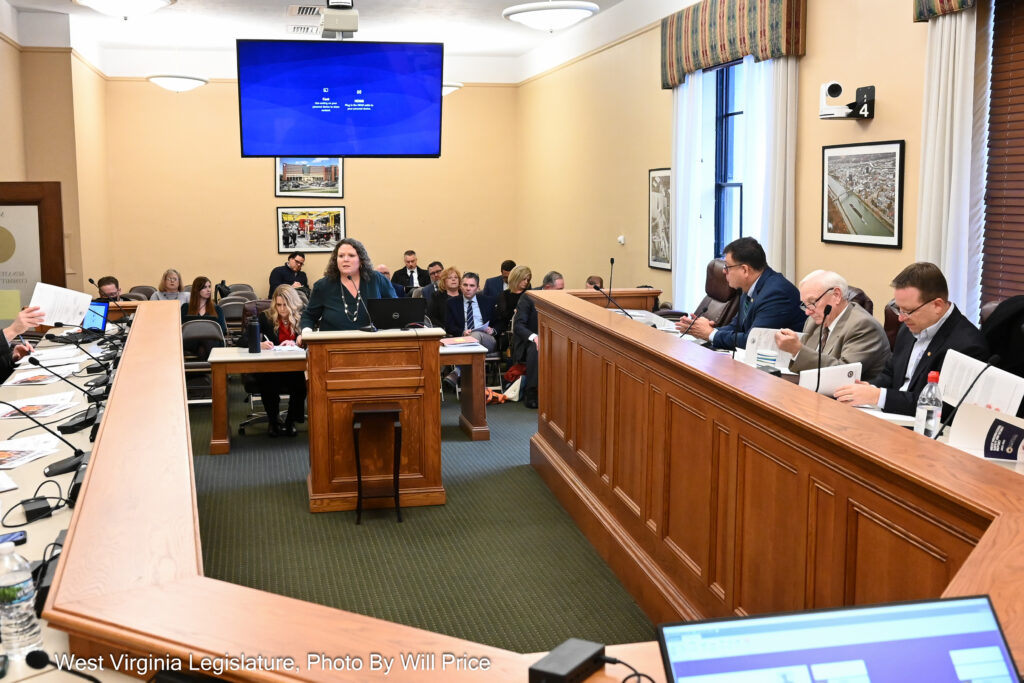A federal college financial aid form is being simplified, but the timeline is causing concern.
The Free Application for Federal Student Aid, commonly known as the FAFSA, unlocks both federal and state financial aid for students.
The 10-page document can be daunting for both students and parents.
Sarah Armstrong Tucker, chancellor of the Higher Education Policy Commission, told the Legislative Oversight Commission on Education Accountability Sunday the form asked for information that was difficult to find, more so for students in non-traditional situations such as foster care, guardianships or homelessness.
“Lots of people felt that the FAFSA was so complicated that it made a lot of students opt out from going to college,” she said. ”There were a lot of kids who just didn’t have access to the information that they needed in order to fill out that FAFSA so that they could get the federal financial aid and then indeed get some of that state aid.“
Tucker told the commission that for the past three years, the U.S. Department of Education has been working to simplify the form. One of the expected changes will allow applicants to automatically connect their tax documents to the FAFSA.
“I don’t have to, as a parent, go to my IRS form, find all those numbers, put those numbers in the right boxes,” Tucker said. “It makes sure everything’s correct, which will be wonderful and great and will absolutely simplify the process, right? But that’s been a challenge, trying to get those systems that have never talked to each other before linked together. That has been really, really difficult.”
She said the changes are welcome, but the new form has yet to be released and that is causing delays for college applicants.
“Typically we would have had October the first of 2023 through now for our high school seniors who have been filling out that document. They have not been,” Tucker said. “Moreover, this is a new FAFSA. So we haven’t seen it.”
Tucker says the new form is expected to be released December 31, and she warned legislators to expect communication from their constituents.
“Once this rolls out in January, there’s going to be some concern from folks about what this looks like and deadlines for our own financial aid programs,” she said.
Tucker flagged one final potential complication regarding a calculation of the expected family contribution to higher education expenses.
“That tells us how much money a family should be able to contribute to a student loan to college,” she said. “Those tables include things like inflationary rates. Those tables haven’t been updated since 2020. So the recent inflationary rates that we’ve had are not included in those tables. And we don’t believe they’re going to be included probably until next year.”
The lowest income students are still expected to receive maximum Pell grants, but Tucker said students from higher income families may be leaving money on the table. Ultimately she said her office will not know until the new form is published, but the HEPC is trying to be proactive and anticipate changes in the interim.
Harassment and Intimidation
Jeff Kelley, officer of accountability and assessment for the West Virginia Department of Education presented a harassment, intimidation and bullying report for the 2022-23 school year to the meeting. The report showed that referrals for harassment, intimidation, or bullying behaviors accounted for 2.1 percent of all student disciplinary referrals across the state.
“I think it’s about 18 and a half incidents per day across the state,” Kelley said.
Kelley said middle school aged students accounted for the vast majority of harassment, intimidation, or bullying referrals, seven out of every 10 originating from sixth through ninth grades.
Male students were the majority of referrals at 74 percent. The data also showed discrepancies based on race.
“White students represented in discipline data at a slightly lower rate than their representation in the specific population, that’s 82 versus 88 percent,” Kelley said. “Black students and multiracial students were present at a higher rate than their respective population representations.”
Black students account for 4 percent of the state’s student population, but represented 10 percent of referrals for harassment, intimidation, or bullying. Multiracial students account for 7 percent of the state’s student population, but also represented 10 percent of referrals for harassment, intimidation, or bullying.
“A risk ratio calculation indicates the black students to be about 2.25 times more likely to experience those referrals,” Kelley said. “With multiracial students, that number is 1.5 times.”
Students with disabilities, or who were eligible for special education services accounted for one third of all referrals for harassment, intimidation, or bullying.
“Students with disabilities were about two times more likely to be referred,” Kelley said.
Committee Chair Del. Joe Ellington, R-Mercer, asked if Kelley thought interventions were proving effective in stopping students from repeating the offenses. Kelley said he believed the data supported that notion.
“What we’re seeing, as I think schools and counties are taking proactive approaches, they’re educating students, staff and parents about ‘What is bullying? What’s it look like? What are the signs?’ and when we see these things, what is the appropriate way to respond?” he said.




















